Bodhipaksa's Blog, page 5
December 13, 2014
(#EthicalChristmas) What kind of society are you creating?
 Recently I wanted to buy some herbal tea in bulk. I did my research on Amazon, found the brand I wanted, and then promptly headed over to the manufacturer’s website to make my purchase. This cost me a little more, but I was happy to pay the extra expense. Why, you may wonder?
Recently I wanted to buy some herbal tea in bulk. I did my research on Amazon, found the brand I wanted, and then promptly headed over to the manufacturer’s website to make my purchase. This cost me a little more, but I was happy to pay the extra expense. Why, you may wonder?
Whether we consider it or not, every penny we spend has some effect on the direction our society takes. We can choose to spend our money at businesses that are exploitative and socially harmful, or at businesses that make a more positive contribution to our world. We collectively create the world we live in.
I’ve stopped shopping at Amazon. In some ways the company is wonderful. It’s an amazing example of entrepreneurialism. It offers a huge range of goods, often at significantly lower prices than can be found elsewhere. I have to admit I’ve shopped there a lot in the past. And there’s a benefit to that. I’ve definitely saved some money (and time — let’s not overlook the convenience of shopping from home). In theory the money I’ve saved is of benefit to me.
But there’s a bigger picture too. Amazon thrives in part by employing people at rock bottom wages. In the US, workers are forced to toil in huge warehouses where temperatures can be over 38°C (100°F) in the summer. Many have collapsed with heat exhaustion. The work is brutal, involving constant movement, bending, stooping, lifting, and fast-paced walking for miles on hard concrete floors. Even young and fit employees find themselves in constant pain. Workers are electronically monitored in a way reminiscent of George Orwell’s 1984, and even bathroom breaks are strictly timed. Staff have to queue up for long periods of time in order to pass through security checkpoints when leaving at the end of their shifts, and Amazon refuses to pay them for that time, on the basis that it’s not an “integral” part of their work. Is this the kind of world we want to build for ourselves?
There’s also the financial pressure that the company puts on suppliers, including the tactics they used in their recent dispute with the publisher Hachette, such as increasing the shipping times of Hachette’s titles, refusing to take pre-orders, or simply removing the “buy” button. This was all in an effort to force the publisher to drive down its prices.
And then there’s Amazon’s highly effective (although legal) tax avoidance strategies. They’re a company that benefits from the infrastructure and services that taxes fund, and yet gives little or nothing back to the tax system.
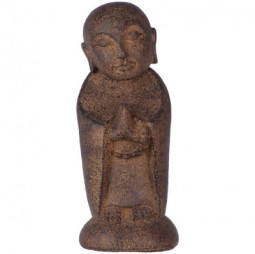 Check out our online meditation supplies store for gifts, meditation MP3s & CDs, and more!We have choices. We can choose to support other retailers, online or off. So that’s why I decided to boycott Amazon. I feel better giving my money to a small herbal tea company that, I’m pretty sure, treats its workers with more respect and, like most small businesses, pays into the taxation system. I consider that the extra costs I incur by avoiding Amazon aren’t really costs. After all, if Amazon isn’t paying the taxes that support our national infrastructure and essential services, then someone else is. That someone else is me, and you.
Check out our online meditation supplies store for gifts, meditation MP3s & CDs, and more!We have choices. We can choose to support other retailers, online or off. So that’s why I decided to boycott Amazon. I feel better giving my money to a small herbal tea company that, I’m pretty sure, treats its workers with more respect and, like most small businesses, pays into the taxation system. I consider that the extra costs I incur by avoiding Amazon aren’t really costs. After all, if Amazon isn’t paying the taxes that support our national infrastructure and essential services, then someone else is. That someone else is me, and you.
We may think our economic choices don’t make a difference, but as someone who runs a small online store, I have to tell you that that’s not the case. Every order for a CD, or for incense, or for a Buddha statue that we receive on Wildmind’s store is received with gratitude — and sometimes relief. And our suppliers, many of them artisans in the developing world, being paid fair wages for their work, are grateful too.
So this is the point of #ethicalchristmas. Over the next few weeks you’ll have plenty of opportunities to spend your money at small companies, some of whom make a positive contribution to the world. You have a choice. I’d suggest you choose with wisdom, and with compassion. Choose to create a better world.
Related posts:
Wildmind as “right livelihood”
Creating a culture of generosity
(#EthicalChristmas) The evolution of donation-supported online teaching
Related posts brought to you by Yet Another Related Posts Plugin.
December 10, 2014
(#EthicalChristmas) The evolution of donation-supported online teaching
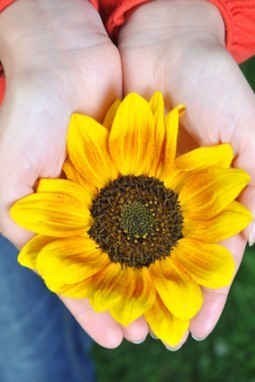 There’s been a rapid evolution of how Wildmind runs online courses. For years we held online courses with anything from half a dozen to 20 participants. Then we decided to start 2013 with a more public 100 Day Meditation Challenge, followed by another 100 days exploring the four Brahmaviharas. For these events I wrote a daily (or almost daily) article on Wildmind’s blog, accompanied by guided meditations.
There’s been a rapid evolution of how Wildmind runs online courses. For years we held online courses with anything from half a dozen to 20 participants. Then we decided to start 2013 with a more public 100 Day Meditation Challenge, followed by another 100 days exploring the four Brahmaviharas. For these events I wrote a daily (or almost daily) article on Wildmind’s blog, accompanied by guided meditations.
When Mark joined the team, we decided to develop that model yet further, in order to create a year-long schedule of meditation events for 2014. This became our first Year of Going Deeper. We offered a program of eight online courses, covering everything from learning basic meditation techniques, to cultivating absorption (jhana), to developing insight.
We’ve learned a lot on the go! With the two events in 2013 we didn’t know how many people were participating; we guessed it was a few hundred, but we were simply posting material on the blog and hoping that people were paying attention! So for our first Year of Going Deeper we decided to run the events via email. This gave us a clear idea of how many people were participating. As it happened, we had over 1,200 people sign up for each of the eight events!
We’re building on that success by offering another Year of Going Deeper in 2015 with an even larger program.
One thing we’ve learned is to have shorter events. For example, instead of a 100 day event exploring the four Brahmaviharas, we have one 25 day event for each of the four practices. This is less daunting for potential participants, and allows people to join at different times.
We’ve also learned not to use the “f-word” — that is, the word “free”! We’d said that our first Year of Going Deeper was “free,” but that donations were welcome. That turned out to be a mistake! The word “free” is very attractive, but it sets up an unhelpful expectation: last year only around five percent of participants donated.
Like any organization we have financial needs, and we’ve really struggled this year because of our missteps in communicating them. So for 2015 we’re encouraging participants to donate when they enroll, being more upfront about our needs while (we hope) avoiding being pushy.
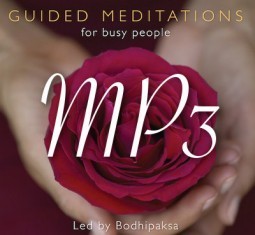 If you like our articles and want to support the work we do, please click here to check out our books, guided meditation CDs, and MP3s. Or you can make a donation.Our first event of next year — a 28 day meditation challenge called “Sit Breathe Love” — starts on January 1, and so far the indications are good. It’s quite likely that we’ll end up the same number of participants as last year, and so far about 50% of those who’ve enrolled have made a donation: a ten-fold increase on last year. We’re hopeful that this is going to bring us some much-needed financial stability.
If you like our articles and want to support the work we do, please click here to check out our books, guided meditation CDs, and MP3s. Or you can make a donation.Our first event of next year — a 28 day meditation challenge called “Sit Breathe Love” — starts on January 1, and so far the indications are good. It’s quite likely that we’ll end up the same number of participants as last year, and so far about 50% of those who’ve enrolled have made a donation: a ten-fold increase on last year. We’re hopeful that this is going to bring us some much-needed financial stability.
Wildmind, I think, does an amazing job in reaching out and making meditation instruction available on a mass scale. We’ve literally touched millions of lives through our website. I’m looking forward to the day when no longer have to do this on a shoestring and with an anxious eye on our cash-flow, but instead have an abundance of resources to draw on!
I’m sure that 2015 won’t be our last Year of Going Deeper. In fact I’d like to keep running these events and for them to grow. Wouldn’t it be inspiring to have 10,000 people participating in each of these events? Or even 100,000? I hope you can join us for one of them!
Learn more about Wildmind’s Year of Going Deeper
And if you feel moved to give a general donation to Wildmind you can do so here!
Related posts:
Join us for our second Year of Going Deeper
Make a donation to Wildmind, and receive a 2.5 hour mindfulness audio download
Progress, pitfalls, and more progress!
Related posts brought to you by Yet Another Related Posts Plugin.
December 8, 2014
Three tips for developing the habit of daily meditation
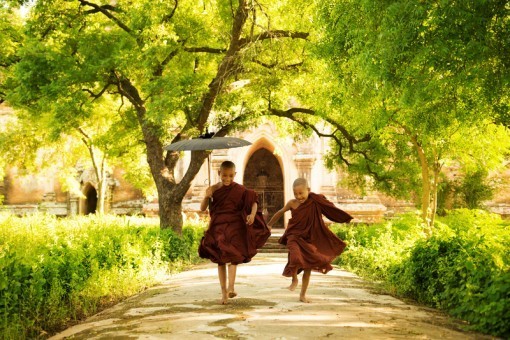
Sometimes I find it hard to set up a good habit. Other times it’s easy. I’ve been wondering if I could look at a habit I’ve found easy to set up, and then apply those principles in other areas. Now I already meditate daily, but perhaps this is something you’ve found difficult and could use some pointers with, or maybe, like me, you’re already a regular meditator but have other areas you need to be working on (and let’s face it, who couldn’t). So I thought I’d share my observations and reflections.
One good habit I’ve been successful in setting up is going out running three times a week, with the aim of building up to running a 5k. I’ve been going out very regularly, and have been enjoying a sense of joy during every run and a glow of satisfaction afterward. I’m not even deterred by bad weather!
Now I’ve tried to get into running before, but I’ve never enjoyed it so consistently. What’s different this time?
Lesson 1
First, I have a running buddy. If he’s not available for some reason, I’ll still go running on my own, but I’m more motivated to go running with a friend because it’s much more fun when we’re together and we keep each other accountable.
What’s the lesson for meditating regularly?
You may not be able to meditate with others every day in the flesh, but you can use an app like the Insight Timer, which shows you how many other people are meditating at the same time as you. Or you can have a meditation buddy that you can text or email each other with a brief message confirming that you’ve meditated. If you haven’t heard from your partner you can send her a quick reminder. At times I’ve meditated with a friend on Skype. Of course we’re in silence, but there’s a real sense of being with another person.
Lesson 2
The second difference from my usual attempts at running is that this time I’m using an app. We have a “Couch to 5k” app that provides a structured nine-week program of running, gradually building up to a solid 30 minute run, which is easily enough time to cover 5 kilometers.
What’s the lesson for meditating regularly?
Set short but attainable targets for yourself. It’s OK to do a short meditation each day to begin with. There are lots of meditations of about eight minutes in length (I’ve made a CD of them myself) and that’s enough to make a subtle difference to our day.
And for most people, the equivalent of a meditation app is a timer or a guided meditation. Both will give you a sense of structure. A guided meditation not only gives your practice some structure, but is also like having a meditation buddy who walks you through the meditation.
Lesson 3
The third difference is that we congratulate ourselves and each other.
Our running app is structured: we’ll run, walk, run, walk, run for 25 minutes or so. At the end of each leg of running we’ll high five each other and give ourselves congratulations on our progress. The boost in mood that we get from doing this is very noticeable.
Remember it’s OK to congratulate yourself. You could get to the end of a meditation and say to yourself “Target achieved! Yay, me! That’s awesome!” and so on. Be your own cheerleader. Some of us have been brought up to be suspicious of self-congratulation, but remember that you’re not praising yourself in order to make yourself look good but so that you can associate a positive habit with feelings of pleasure, and look forward to your practice.
I think these three lessons from my running practice are something I can bring into other areas of my life — and perhaps you’ll find them useful too.
Related posts:
What animal trainers can teach you about establishing a daily meditation practice
Hit the ground sitting! Day 4 of our 100 Day Meditation Challenge
Four tips for meditating in public
Related posts brought to you by Yet Another Related Posts Plugin.
December 5, 2014
Finding the sacred balance
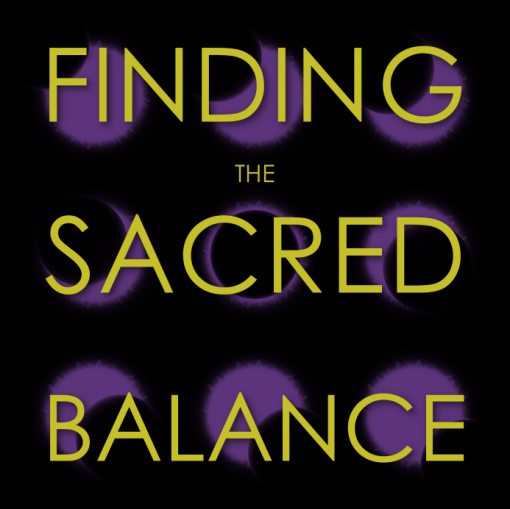
The short story is that we need to raise $12,000 in donations before the end of the year in order to break even. There are more details below, but if you’ve benefitted from the work we do, or appreciate our efforts to make meditation teachings more widely available, please respond by contributing generously so that we can continue to provide our activities for everyone to enjoy. We really can’t afford to sustain a loss this year.
It would be wonderful if you could donate $1000, or $100, or even just $10 — whatever you can afford.
If you want to use a credit card, you can click here, enter the amount you want to donate, and then click on “add to cart.”
If you have a Paypal account, you can click here and enter your chosen donation.
And lastly, checks can be mailed to: Wildmind, 55 Main St. Suite 315, Newmarket NH 03857, USA.
Here’s some background!
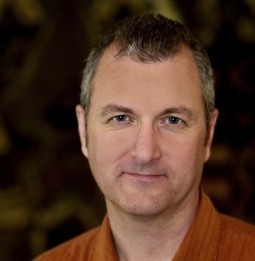 We’ve had a challenging couple of years. In 2013 we learned that our tax accountant had not filed our taxes for the previous two years. This created a huge problem with the Internal Revenue Service, and we had to spend around $8,000 sorting things out with them. This, as it happens, was money well spent, because we’d otherwise have faced penalties of $25,000, which we managed to get waived.
We’ve had a challenging couple of years. In 2013 we learned that our tax accountant had not filed our taxes for the previous two years. This created a huge problem with the Internal Revenue Service, and we had to spend around $8,000 sorting things out with them. This, as it happens, was money well spent, because we’d otherwise have faced penalties of $25,000, which we managed to get waived.
We took on Mark Tillotson in order to free me up to teach more, with the assumption that this arrangement would start to pay for itself before the end of the year. We’re making progress in that direction, but we haven’t yet got there. Keeping Mark employed as part of the team is my major priority, since it allows me to do what I’m best at — writing and teaching — rather than be distracted by routine office work.
Thanks to Mark’s presence we were able to launch our Year of Going Deeper, which involved me teaching full-time. On a personal level this was deeply satisfying, but unfortunately on a financial level this didn’t work out. We made a strategic error in saying “these events are free, but donations are appreciated.” Unfortunately this seems to have sent out a signal we didn’t intend, and only around 3% of participants donated.
The financial pressure we’ve experienced has been quite extreme. It saps our energy to be juggling bills and experiencing anxiety about whether we can continue.
Celebrating Our Successes!
But in many ways things have been going well! Here are a few highlights:
There were 1,500,000 visits to our website in the past 12 months. And our traffic is steadily growing! That’s a lot of meditation teaching!
We taught meditation to people in every country in the world (except for Western Sahara, for some reason).
We ran seven online events as part of our Year of Going Deeper, and these events averaged over 1,200 participants each. All these events were by donation.
The materials I wrote for these events — on cultivating jhana, on the six element practice, and on lovingkindness — are in the process of being edited into book form.
The very talented Amy Kosh joined our team part-time during the summer, and has been making a wonderful contribution in running our online store, which helps subsidize our teaching work.
Our base of monthly financial supporters has been growing steadily.
Things are Looking Up!
We think that financial problems this year are just teething problems.
Our tax situation is now sorted out, and our accounting bills will be much lower in 2015.
We’ve changed how we ask for donations, and the percentage of participants who are making a donation has increased tenfold. (The total number is down, but we’re hopeful that on balance we’ll do better).
The material that I wrote for our meditation challenges in 2014 will start going on sale in 2015, which will bring in more income. We’ll also be able to cut some of our costs next year.
In short, we believe we’re on the way to being financially stable. We’re looking forward, one day, and perhaps soon, to having an abundance of resources to draw on, rather than worrying about how to continue. We hope that soon we won’t be in the position of having to ask for help like this!
The Sacred Balance
We’re not just trying to balance our books, but are looking for a sense of balance in everything we do. We believe passionately in the power meditation has to transform lives for the better. We’re doing everything we can, with the resources at our disposal, to help others. We’re seeking a balance where what we give out to the world in energy is met with enough support so that we can flourish and help the world to flourish. We have big plans! We’re not at that point of balance yet, but we believe it’s attainable. Please support us and help us get there!
Love,
Bodhipaksa
PS. Again, three ways you can make a donation are:
Donate by credit card
Donate via Paypal
Or mail a check to Wildmind, 55 Main St. Suite 315, Newmarket NH 03857, USA.
Related posts:
An urgent appeal – please give today!
Progress, pitfalls, and more progress!
Join us for our second Year of Going Deeper
Related posts brought to you by Yet Another Related Posts Plugin.
November 28, 2014
Join us for our second Year of Going Deeper
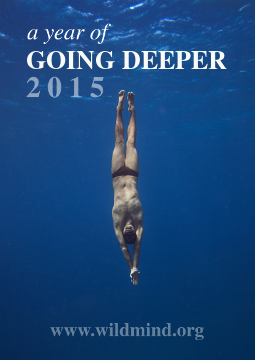 Join us for a series of thirteen meditation events throughout 2015. We’re calling this our Year of Going Deeper.
Join us for a series of thirteen meditation events throughout 2015. We’re calling this our Year of Going Deeper.
There is no fixed charge for these events; they’re all by donation.
Practice reminders delivered by email. (Three to seven per week).
Meditation guidance and links to guided meditations.
Optional meditation events: watch live on video, or catch the archive later.
Online community: share your experience, receive support and encouragement.
There is no fixed charge for these events. Participation is by donation.
Our Year of Going Deeper includes events for all levels of practice, whether you’re a beginner interested in learning basic techniques or a more experienced meditator interested in cultivating deep meditative states and insight.
Please share this news with your friends. We have 1,200 on each of our events last year, and we’d like this Year of Going Deeper to be a year of going bigger!
Click here for more information »
Related posts:
Join us for a Year of Going Deeper
A year of going deeper
Join us for Wildmind’s 100 Day Meditation Challenge
Related posts brought to you by Yet Another Related Posts Plugin.
November 22, 2014
Buddhism, vegetarianism, and the ethics of intention
 One of the most attractive things about Buddhism is that it considers ethics to be based on the intentions behind our actions. This perspective is is radical in its simplicity, clarity, and practicality.
One of the most attractive things about Buddhism is that it considers ethics to be based on the intentions behind our actions. This perspective is is radical in its simplicity, clarity, and practicality.
When our actions are based on greed, hatred, or delusion, they’re said to be “unskillful” (akusala), which is the term Buddhism prefers over the more judgmental terms “bad” or “evil” — although those terms are used too, albeit mostly in the context of poetry. By contrast, when our intentions are based on mindfulness, compassion, and wisdom, they’re said to be skillful (kusala).
For many people accustomed to systems of morality based on commandments, rewards and punishments, the Buddhist ethical perspective is liberating and refreshing.
But sometimes the idea that Buddhist ethics is about intention is seen in too narrow a way. The problem is that a deluded mind is trying to become aware of itself! We’re not always aware of our intentions, or may choose to fool ourselves about what our motivations really are. We develop ethical blind spots and adopt evasive strategies to justify our actions and to avoid change. Delusion keeps us tied to our current way of being and stops us from making spiritual progress.
One tool that the Buddha encouraged as a way of breaking out of ethical confusion is paying attention to the consequences of our actions:
Having done a bodily action, you should reflect on it: ‘This bodily action I have done — did it lead to self-affliction, to the affliction of others, or to both? Was it an unskillful bodily action, with painful consequences, painful results?’ If, on reflection, you know that it led to self-affliction, to the affliction of others, or to both; it was an unskillful bodily action with painful consequences, painful results, then you should confess it, reveal it, lay it open to the Teacher or to a knowledgeable companion in the holy life. Having confessed it… you should exercise restraint in the future.
If we notice that we’re harming others, or that we’re causing pain to ourselves — for example through inducing guilt — then we need to look more closely at our motivations, being open to the possibility that we’re not clear enough about our intentions. We need to look for and admit to hidden ethical agendas. I wrote about this recently in terms of the way some men harass women on the street, without being willing to look at the fact that their attentions are unwanted and cause suffering.
Another example is the way most people who eat meat say that they like animals. They don’t think of themselves as cruel. Most of them are shocked by actual cruelty and want animal abusers to go to jail. And at the same time, they pay people to abuse animals on their behalf. They don’t think of themselves as doing this, but when they buy meat they’re financially rewarding people who raise animals in stressful and unnatural conditions, transport them, terrified, long distances in trucks, herd them into a slaughterhouse, shoot them in the head, hoist them into the air by their back legs, cut their throats, and then disembowel and dismember them in preparation for being shrink-wrapped and sold.
Although there’s no overt ill intent when you pick up a steak at the supermarket, you’re paying for this whole process to happen — a process that causes affliction to others. And we don’t want to think about all this. We’re shocked by animal cruelty, so for example we don’t want to see videos of animals in slaughterhouses because we’d rather avoid being shocked. That way we can avoid the discomfort that comes from change.
If we’re going to take the Buddha’s teachings seriously as a guide for living, then we need to examine the harmful consequences of our actions, and then look for the hidden intentions and assumptions that drive those actions.
Implicit in buying meat are attitudes like, “You are more useful to me dead than alive,” and “I kind of like you, but I’m hungry, and so I don’t mind you being killed.”
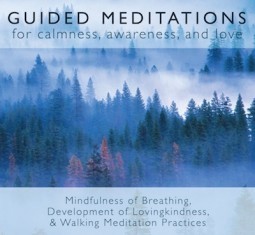 If you like my articles and want to support the work I do, please click here to check out my books, guided meditation CDs, and MP3s. Or you can make a donation.The attitudes are rarely if ever experienced as overtly as that (and I’ve expressed them rather baldly here) but something like that is going on. I know. I used to eat meat.
If you like my articles and want to support the work I do, please click here to check out my books, guided meditation CDs, and MP3s. Or you can make a donation.The attitudes are rarely if ever experienced as overtly as that (and I’ve expressed them rather baldly here) but something like that is going on. I know. I used to eat meat.
Meat-eating is just an example. I’ve picked it because so many people who want to follow the Buddhist path fall into the trap of thinking that if their actions are not directly harming others, then there’s no ethical issue at stake. And I picked it because I really hope we can reduce the amount of suffering in our world.
The problem with discussing an issue like this, though, is that it’s emotive, and so the larger point — we should examine the consequences of our actions in order to clarify our hidden intentions — can get lost in our emotional reactions.
Setting aside any such reactions for the moment, the principle of examining the consequences of our actions extends into almost every aspect of our lives. One example is our interaction with the environment. I know that taking my car to work unnecessarily contributes to climate disruption. And I know that climate change causes suffering to people on the other side of the planet. And yet I still take the lazy route. This suggests that I care less about people if they live far away or if I don’t personally know them, and that I value my comfort over others’ wellbeing. My “forgetting” to do my share of the housework suggests that I have a sense of entitlement, and that I think other people’s job is to clean up after me.
The applications are endless; Buddhism is calling upon us to be radically compassionate, radically mindful of our actions.
The principle that reflecting on the consequences of our actions illuminates our unacknowledged motivations is rarely recognized, but it’s one of the most powerful teachings that the Buddha offered us.
Related posts:
Karma: it’s not just intention
“Being in the moment”
“Our deeds determine us, as much as we determine our deeds.” George Eliot
Related posts brought to you by Yet Another Related Posts Plugin.
November 18, 2014
The third arrow
 The first arrow: Think of a time someone said something hurtful to you, and let’s try to break down what happened. A comment was made, and you probably experienced actual physical pain, most likely in the solar plexus or heart. (When the hurt is particularly strong, we sometimes say it feels like we’ve been punched in the gut, don’t we?)
The first arrow: Think of a time someone said something hurtful to you, and let’s try to break down what happened. A comment was made, and you probably experienced actual physical pain, most likely in the solar plexus or heart. (When the hurt is particularly strong, we sometimes say it feels like we’ve been punched in the gut, don’t we?)
What went on was that some fast-acting part of your brain believed you were being criticized or marginalized, and so identified the comment as a threat to your wellbeing. That part of your brain then attempted to alert the rest of the mind to this threat by sending signals to pain receptors in the body. This all happens in a fraction of a second, and automatically. You don’t “decide” to feel hurt.
This kind of hurt is an example of what, in a well-known teaching, the Buddha called “the first arrow.” We can try not to get shot by arrows, but emotional pain like we’ve been discussing, along with purely physical pain — as when we’re sick or injured — is unavoidable. Even the Buddha experienced physical and emotional discomfort.
The second arrow: The existence of a first arrow of course implies a second! The Buddha explained the “second arrow” as the way that the mind reacts to physical or emotional discomfort in ways that create even more pain. We do this by things like indulging in self-pity, thinking about how unfair it is that we got hurt, blaming ourselves, being critical of the other person, or rehashing the hurtful event over and over again, thinking about how we could have handled things differently. The mind compulsively returns to the painful event we’ve experienced, and every time we do so we cause ourselves yet more pain, because in remembering the hurt, we re-experience it. So as the Buddha said, this is like someone being hit by an arrow, and then reacting in a way that causes a second arrow to be unleashed. You probably did something like this after hearing the hurtful comment.
So there are these two arrows — two forms of pain.
The third arrow: But wait, there’s more! In the teaching of the two arrows, the Buddha talked about a third kind of pain: pain that’s deferred because of clinging to pleasure. This is less often talked about, perhaps because he didn’t offer a colorful image to illustrate it. I call this third form of pain the “third arrow,” and I’m going to supply the missing simile.
The Buddha gave a detailed explanation of how the third arrow works. He pointed out that when someone experiences the first arrow of unavoidable pain, he or she can feel resistance to the pain, and then “seek delight in sensual pleasure.” This is because, not having learned to work with the mind, the person “does not know of any escape from painful feeling other than sensual pleasure.” When we act this way we create a pattern of avoidance and denial that leads to yet further pain in the future.
This third arrow is an important teaching regarding addictive behaviors. Who among us is not afflicted with compulsiveness? Drinking alcohol, eating “comfort food,” watching TV, endlessly reading posts on social media sites, browsing the web, checking our phones for new messages — these are all ways of getting hits of dopamine, a neurotransmitter central to the brain’s reward and pleasure centers. And each of these activities is an escape from a painful feeling that in all likelihood we barely acknowledged.
The “third arrow” of deferred suffering is like when a person has been hit by an arrow and sees yet another one coming, but chooses to ignore it. Pretending nothing’s wrong, he or she indulges in activities like eating, drinking, shopping, watching TV, and checking Facebook. It’s not that any of these things is necessarily very pleasurable in itself, by the way. The “pleasure” we feel is often more like the comfortable numbness of compulsive activity.
Of course we can ignore our pain for a while, but we can’t distract ourselves indefinitely. Eventually that airborne dart — the “third arrow” that we’ve been ignoring — finds its target.
Avoiding the third arrow
If we understand, as the Buddha put it, the “origin and passing away” of a painful feeling (the first arrow), then we can relate to it differently. We know it’s not permanent. We know that it will pass. We can simply experience it without aversion. And in the open space of mindfulness that we’ve created, a painful feeling arises and then passes away.
A recent study showed that painful feelings like shame, fear, and humiliation pass in mere minutes. The less we react with the second arrow of mental self-torment, the quicker painful feelings dissipate. Even if they last longer (the same study showed that sadness can be remarkably persistent), if we don’t respond with the third arrow of denial and distraction, we won’t simply be deferring the pain to some future time.
Putting this into practice
I can pretty much guarantee that within the next half hour you’re going to encounter some kind of dissatisfaction (boredom, hurt, confusion, frustration, etc.) and them immediately be tempted to pursue the next dopamine hit by indulging in some kind of escape activity.
See if you can be alert instead. See if you can stay with the discomfort. Tell yourself it’s OK to have this painful feeling. Recognize that it’s impermanent and that it’ll dissipate as we observe it mindfully. Stay with it long enough for it to dissolve. And when it does, the “third arrow” of deferred suffering will dissolve too, mid-flight.
Related posts:
Three forms of suffering, reinterpreted
The second arrow
Is emotional pain a physical response?
Related posts brought to you by Yet Another Related Posts Plugin.
November 7, 2014
Technology-assisted meditation
 Hopefully I’ll soon be trying out a demo model of the Muse headband, which according to the makers is like a heart rate monitor for your mind. In other words it gives you real-time feedback by detecting your brain signals during meditation, the same way you might use a gadget to monitor your heart rate during physical exercise.
Hopefully I’ll soon be trying out a demo model of the Muse headband, which according to the makers is like a heart rate monitor for your mind. In other words it gives you real-time feedback by detecting your brain signals during meditation, the same way you might use a gadget to monitor your heart rate during physical exercise.
Apparently this can help us to train the brain to be more focused, attentive, and calm. I’ll let you know how I get on. (In the meantime we’ve joined Muse’s affiliate program so you’ll see ads promoting it in our sidebars.)
At the recent Buddhist Geeks conference, where I gave a presentation, there were several other examples of tech related to meditation. Mikey Siegel talked about his BioFluent Technologies project, whose HeartSync audiovisual experience promotes a sense of empathy and closeness among individuals. Mikey talked about how neurofeedback might be used to bring people closer to awakening.
Neema Moraveji is the cofounder of Spire, “the first wearable to track and influence both activity and state of mind.” Spire monitors and analyzes your breathing patterns in real time to show when you are focused, tense, or stressed. It also tracks activities like walking. I think the benefits of something like this are obvious. Unfortunately I didn’t get a chance to take Spire for a test drive on the conference.
Jacob Redmond demonstrated the Emotiv Epoc headset, which was hooked up to a fun computer game in which you were meant to push a ball back into the screen. I tried this and completely bombed. Unfortunately the person who demoed the game to me didn’t tell me what I was supposed to do to make the ball move. I tried a variety of meditative approaches, only to find out afterward that you’re supposed to focus for the whole time on one thing. So what I’d been doing (switching techniques in order to find one that worked) was 100% the wrong thing to be doing!
I’ve been intrigued for some time by the possibilities that real-time brain monitoring offers to meditators. I think that often when people are meditating they’re headed in “the right direction” for a while but then get distracted. An external monitor can act like a mindfulness bell that’s basically saying “Hey, this thing you’re doing is good. Stick with it.”
Related posts:
Meditation, technology, and Google Glass
Performance: Researchers Test Meditation’s Impact on Alertness
His Holiness the Karmapa: The technology of the heart
Related posts brought to you by Yet Another Related Posts Plugin.
November 5, 2014
“When the Anger Ogre Visits,” by Andrée Salom
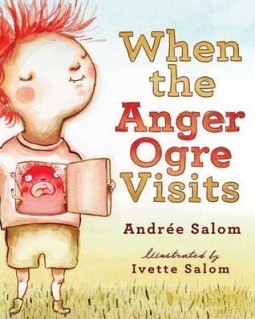 Some weeks ago I read this book with my kids (a six-year-old boy and an almost-eight-year-old girl) several times now, and they enjoyed both the story and the images. But the book became especially relevant recently when my son developed the habit of kicking and punching his sister. That’s a phase a lot of kids go through, but it’s especially worrisome because he’s taking karate classes, and at some point he’s going to be able to do some serious harm.
Some weeks ago I read this book with my kids (a six-year-old boy and an almost-eight-year-old girl) several times now, and they enjoyed both the story and the images. But the book became especially relevant recently when my son developed the habit of kicking and punching his sister. That’s a phase a lot of kids go through, but it’s especially worrisome because he’s taking karate classes, and at some point he’s going to be able to do some serious harm.
So last night, when my son was getting mad, we picked up the book again, and read through it. he wanted to read the book out loud himself, and he was able to do so with only a little help. Daddy was proud!
After he’d finished with the reading we talked about some of the things we can do to calm down our anger when it pays a visit.
We can breathe slowly and deeply.
We can use our imaginations to picture ourselves floating and relaxing on the sea.
We can relax the body.
We can listen to the sound of our breathing.
Salom reminds the child that “As you pay attention, the Ogre will change form,” and in fact we see the red, swollen ogre deflating like a balloon and his contorted face dissolving into a smile as he becomes “friendly, gentle, and warm.”
“Next time it comes a-knocking, you’ll know just what to do. Invite the Anger Ogre to relax and breathe with you.
By the time we’d finished reading the book, my son was calm again. Success!
Title: “When the Anger Ogre Visits”
Author: Andrée Salom
Publisher: Wisdom Publications
ISBN: 9781614291664
Publication date: April 2015
Available from: Amazon.co.uk, and Amazon.com.
I’d highly recommend “When the Anger Ogre Visits.” The content is generally very practical, and the illustrations (by Ivette Salom) are colorful and entertaining. The one piece of advice for relating to the Anger Ogre that I think could have been clearer is this:
“If the Anger Ogre is still swollen, tense, and hot,
Offer it some honey of the sweetest kind you’ve got.”
This is a nice image, but we’re left guessing what it actually means. My own guess would be that the child thinks of something positive (perhaps a calm scene or a friendly face) but I’m sure other people will interpret this differently, that some will take the metaphor literally, and that yet others will be confused about what’s being suggested. The rest of the book, though, is crystal clear.
“When the Anger Ogre Visits” was pitched perfectly for my two kids. I’d imagine it would work with children from about three to eight or nine years old.
Related posts:
How to deal with anger
Interesting time coming up
The effects of news-fasting
Related posts brought to you by Yet Another Related Posts Plugin.
An open letter to President Obama from the Buddhist Teachers Network
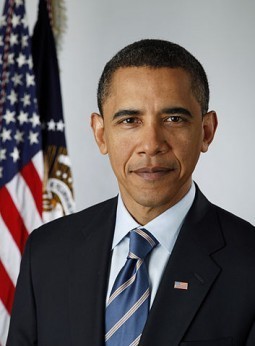 TO PRESIDENT BARACK OBAMA
TO PRESIDENT BARACK OBAMA
from the BUDDHIST TEACHERS NETWORK
URGING YOU TO ADDRESS ANTI-MUSLIM VIOLENCE AT THE UPCOMING ASEAN MEETING IN BURMA/MYANMAR
Dear President Obama,
We as 381 Buddhist Teachers in America represent a large community that is deeply concerned about the growing anti Muslim violence in Myanmar and across Asia, and the plight of the 1.3 million Rohingyas, many forced to live against their will in inhumane internment camps and permanent ghettoized communities. We know you have been supportive of all Burmese people and have encouraged peace and reconciliation across the nation. Your upcoming visit to Burma is an important opportunity to strengthen your capacity as a peacemaker. We urge you to once again express concern for Burma’s Muslims and Rohingyas in your public speeches and as well as in your diplomatic engagements there. We believe you can do so in a positive way, honoring the Burmese legacy of tolerance and Metta, values shared across all the great spiritual traditions, as nations including our own face challenges of injustice and prejudice. Thank you for your care in this matter that affects so many lives in Burma.
Yours Respectfully,
Dr. Jack Kornfield, Spirit Rock Center. Woodacre, CA
Hozan Alan Senauke, International Network of Engaged Buddhists Berkeley, CA
Ven. Bhikkhu Bodhi, Chair, Buddhist Global Relief (BGR), President, Buddhist Association of the United States (BAUS), Chuang Yen Monastery, Carmel NY
Dr. Robert Tenzin Thurman, Professor of Indo-Tibetan Buddhism, Dharma teacher, Menla Mountain Retreat Center, Phoenicia NY
Dr. Reggie Ray, Dharma Ocean Foundation, Boulder and Crestone, CO
B. Alan Wallace, Santa Barbara Institute for Consciousness Studies, CA
Lama Surya Das, Spiritual Director, Dzogchen Center, Cambridge, MA
Gina Sharpe, New York Insight Meditation Center, NY, MY
Carol Wilson, Insight Meditation Society, Barre, MA
Joseph Goldstein, Insight Meditation Society, Barre, MA
Dr. Rick Hansen, San Rafael, CA
Will Kabat-Zinn, Spirit Rock Mediation Center, Woodacre, CA
Dr. Donald Rothberg, Spirit Rock Center, Woodacre, CA
Gil Fronsdal, Insight Meditation Center, Redwood City, CA
Lama Palden. Sukkhasiddhi Fdtn. Fairfax
Trudy Goodman, InsightLA, Los Angeles, CA
Tara Brach, Insight Meditation Center, Washington, DC
Sylvia Boorstein, Spirit Rock Center, Woodacre, CA
Roshi Joan Halifax, Abbot, Upaya Zen Center
Pamela Weiss, SF Insight, San Francisco, Ca
Sebene Selassie, director New York Insight Meditation Center, New York, NY
Venerable Dr. Pannavati, Co-Abbot, Embracing Simplicity Hermitage
Venerable Pannadipa, co-abbot, Embracing Simplicity Hermitage
Acharya C Dhammaratana, Embracing Simplicity Hermitage
Susie Harrington, Desert Dharma, Moab, UT
Steve Armstrong, Vipassana Metta Foundation, Maui, HI
Kamala Masters, Vipassana Metta Foundation, Maui, HI
Matthew Brensilver, PhD, Against the Stream Buddhist Meditation Society , San Francisco, CA
Jane Baraz, Berkeley, CA
Art Jolly, Oakland, CA
Dr. Nikki Mirghafori, Spirit Rock Center, Woodacre, CA
Narayan Helen Liebenson, Cambridge Insight Meditation Center
Cambridge, MA
Konda Mason, East Bay Meditation Center, Oakland, CA
Maureen Shannon-Chapple, InsightLA, CA
Kokyo Henkel, Santa Cruz Zen Center, CA
Roshi Pat Enkyo O’Hara, Village Zendo, NY, NY
Santacitta Bhikkhuni, Aloka Vihara, Placerville, CA
Kate Lila Wheeler, Compassion Sangha
Somerville, MA
Tempel Smith Spirit Rock Center. Woodacre, CA
JoAnna Harper, Against the Stream Buddhist Meditation Society, Los Angeles, CA
Erin Treat, Durango Dharma Center, Durango, CO
Richard Shankman, Spirit Rock Center, Woodacre, CA
Gregory Scharf, Insight Meditation Society, Barre MA
Ralph Steele. Buddhists of New Mexico
Stan Lombardo, Kansas Zen Center, KS
Daishin McCabe, Soto Zen Buddhism
George Pitagorsky, NY Insight Meditation Center, NY
Zipporah Portugal, Insight Meditation Society NYC, NY
Kirsten Rudestam, Insight Santa Cruz, CA
Kathryn Turnipseed, Albuquerque, NM
Bill Spangle, Kagyu Changchub Chuling, Portland, OR
Dora DeCoursey, Kagyu Changchub Chuling, Portland, OR
Lori Wong, Insight Meditation Central Valley, Modesto, CA
Kirtan Coan, Winston Salem Dharma Community, NC
Rev. Gaelyn Godwin, Houston Zen Center, Houston, TX
Claire Stanley, Ph.D., Vermont Insight Meditation Center, Brattleboro, VT
Rev Christine Palmer, Soto Zen, Mill Valley, CA
Jeanne and Steve Lowry, Gathering Waters Sangha, Milwaukee WI
Rev. Eido Frances Carney, Olympia Zen Center, Olympia, WA
La Sarmiento, Insight Meditation Community of Washington, MD
Gordon Peerman, Insight Nashville, TN
Ruby Grad, Portland Insight, Portland, OR
Dr Pawan Bareja, East Bay Meditation Center, Oakland, CA
Ann Buck, InsightLA, Los Angeles, CA
Janice Clarfield, WestCoast Dharma
John Mifsud, East Bay Meditation Center, Oakland, CA
Ayya Dhammadhira, Mahpapajapati Monastery, Pioneertown, CA
Rev. Judith Randall, San Francisco Zen Center, CA
Wildecy de Fatima Jury, EBMC, Oakland, CA
Daniel Bowling, Spirit Rock Center, Woodacre, CA
Shell Fischer, Insight Meditation Center, Washington DC
William (bill) Brooks, Insight Meditation Community of Fredericksburg, VA
Gary Buck, PhD., Spirit Rock Center, Woodacre, CA
Francesca Morfesis, Insight Meditation Society, Barre, MA
Elizabeth Rapaport, Albuquerque Vipassana Sangha , NM
Jundo Cohen, Treeleaf Sangha
John Blackburn, Tennessee Community of Mindfulness, TN
Deborah Ratner Helzer, Insight Meditation Community of Washington, MD
Vanee Songsiridej, MD, Peace Sangha, WI
Ron Vereen. Durham, NC (Triangle Insight Meditation Community)
Gary Singer, New York Insight, NY
Susan Orr, Sacramento Buddhist Meditation Group, CA
Dosho Port, Great Tides Zen, Portland, ME
Cornelia Santschi, Newark Community Meditation Center, Newark NJ
Katy Wiss, Westchester Insight Meditation Community, Danbury, CT
Maureen Fallon-Cyr, Durango Dharma Center, CO
Lesley Grant, Marin Mindfulness Institute , CA
Oren J. Sofer, Oakland, CA
Susan Bachman, Insight Meditation Center, Redwood City, CA
Don Morreale. Colorado Insight Meditation Community, CO
Carol Cook, Prescott Vipassana Sangha – Prescott, AZ
Patricia Dai-En Bennage, Mt. Equity Zendo, Jiho-an, Muncy, PA
Zenkei Blanche Hartman, San Francisco Zen Center, CA
Katherine Barr, Durango Dharma Center. CO
Judith Roitman (Zen Master Bon Hae), Kansas Zen Center, KS
Rev. Nonin Chowaney, Nebraska Zen Center / Heartland Temple, NE
Ocean Gate Zen Center Shinshu Roberts/Jaku Kinst
Sharon Beckman-Brindley, Insight Meditation Community of Charlottesville, VA
Denis Martynowych, Seattle WA, Seattle Insight Meditation Society
Richard A. Heckler, PhD, Pundarika Foundation, CA
Mary Helen Fein, Mountain Stream Meditation, Nevada City, CA
Linda Ruth Cutts , San Francisco Zen Center / Green Gulch Farm Zen Center / Tassajara Zen Mountain Center, CA
Amy Selzer, New York Insight Meditation Center, NY
Ani Gilda Paldrön Taylor, Portland Sakya Center, Portland, OR
Janet Lipner, Buddhist Peace Fellowship
Kate Wylie, Vermont Insight Meditation Center, VT
Shinchi Linda Galijan, Tassajara Zen Mountain Center
Howard Cohn, Mission Dharma, San Francisco, CA
Susan Ezequelle, Insight Meditation Center
Rikki Asher, Chan Meditation Center, Rego Park, NY
Charmaine Henderson. New York Insight Meditation Center and North Fork of Long Island Insight Meditation Sangha
Rev. Edward Keido Sanshin Oberholtzer, Lewisburg, PA
Joseph Priestley Zen Sangha
Shinge Roko Sherry Chayat, Abbot, Zen Studies Society, Livingston Manor, NY
Caverly Morgan, One House of Peace, Portland, OR
Charles A. Lingo, Jr
True Seal of Virtue, Chan An Duc, Breathing Heart Sangha, Mindfulness Practice Center of Atlanta, Decatur GA
Stephen Brown, Berkeley CA
Lisa Ernst, One Dharma Nashville, TN
Susan Kaiser Greenland, Inner Kids, CA
Keri Pederson, Seattle Insight Meditation Society, WA
Tenney Nathanson (Sensei), Desert Rain Zen, Tucson, AZ
Rev Furyu Schroeder, Abiding Abbess, Green Gulch Farm, San Francisco Zen Center, CA
Debra Seido Martin, Zen West/ Empty Field Zendo, Eugene, OR
Santussika Bhikkhuni, Karuna Buddhist Vihara, Mt. View, CA
Arthur Silacci, Prescott Vipassana Sangha, Prescott, AZ
Rev. Therese Fitzgerald, Dharma Friends, Maui, Hawai’i
Alicia Dougherty, Prescott Vispassana Sangha, Prescott, AZ
Toni Greene
Camille Hykes, Natural Dharma Fellowship, Boston, MA
Anna Suil, Santa Cruz, CA
Shinzen Young, Vipassana Support International
Deborah Alberty, Vipassana Sangha
Richard Brady, Mountains and Rivers Mindfulness Community.
David Lawson, Still Mountain Buddhist Meditation Center, Ann Arbor, Michigan
Martha Wooding-Young
Barbara Casey
Chan Linh Thong, True Spiritual Communication, Peaceful Refuge Sangha, Ashland, OR Kristi Holmstrom
Dr. Karen Hilsberg, Order of Interbeing, Culver City, CA
Laura Goldstein
Rik Center, Mindfulness Care Center, San Francisco, CA
Myokei Caine-Barrett Shonin, Myoken-ji Temple/Nichiren Buddhist Sangha of Texas
Houston, TX
Ernestine Enomoto, Honolulu Mindfulness Community, Honolulu, Hawaii
Helen C. Morgan, Insight Meditation Community of Berkeley
Rev. Keiryu Lien Shutt, AccessToZen.org
Kristen Larson, NO Sangha – Diamond Sangha lineage, Port Angeles WA
Lhundup Jamyang (Marleen Schreuders), FPMT
Shastri David Stone, Chicago Shambhala
Andrew Palmer, Sensei, Open Source Zen (Vast Refuge Sangha, Wet Mountain Sangha, Springs Mountain Sangha), Colorado Springs, CO
Douglas Kaishin Phillips; Empty Sky Sangha; West Cornwall, CT and Lexington, MA
George Bowman Zen Priest, Furnace Mountain Zen Community, Clay City, KY
Joan Sutherland, Roshi, Awakened Life & The Open Source, Santa Fe, NM
Younes Mourchid, Spirit Rock, Woodacre, CA
Leslie Baron
Gretchen Neve, Shambhala Center of Chicago
Jeanne Anselmo, Plum Village Tradition of Thich Nhat Hanh
Leslie Rawls, Dharma teacher, Charlotte (NC) Community of Mindfulness
Kenn Duncan, Prescott Vipassana Sangha, AZ
Mahin Charles, San Francisco, CA
Ven. Bodhin Kjolhede, Abbot, Rochester Zen Center, Rochester, New York.
Shoyo Taniguchi, Ph.D.
Kaye Cleave, San Francisco, CA
Jill Allen
Cynthia Loucks, Prescott Sangha, Prescott, AZ
Tubten Pende, Santa Cruz, CA
Annik Brunet, Sukhasiddhi Foundation, Fairfax, California
Jack Lawlor, Lakeside Buddha Sangha, Evanston, Illinois
David I. Rome
Myoshin Kelley
Susan Antipa
Geoffrey Shugen Arnold, Zen Center of NYC
Venerable Chang Wen, Buddhist Monk, Dharma Drum Retreat Center, Pine Bush, NY
Noah Levine, Against The Stream Buddhist Meditation Society, Los Angeles, CA
Ann Barden, Insight Meditation Ann Arbor, Ann Arbor, MI
Karen Drimay Gudmundsson, Gelongma FPMT, Land of Medicine Buddha
Rev. Konin Melissa Cardenas,
John Yates PhD Dharma Treasure Buddhist Sangha, Upasaka Culadasa
Susannah Freeman White
Glenda Hodges-Cook, Louisville Vipassana Community, KY
Dr. Gareth Sparham
Philip Davidson & Kay Davidson, Mindfulness Meditation For Richmond
Tsechen Ling, University of Michigan, University of California
Ruben L.F. Habito, Maria Kannon Zen Center, Dallas, TX
Gerry Shishin Wick, Roshi, Great Mountain Zen Center, Berthoud, CO
Nancy Baker,NY, NY, No Traces Zendo
Jacqueline Mandell, Samden Ling, Portland, OR
Ethan Nichtern
Bruce Wilding
Rev. Shinkyo Will Warner, Lexington Nichiren Buddhist Community, KY
Michael Schwammberger – Chan Phap Son
B. Alan Wallace, Santa Barbara Institute for Consciousness Studies
Tim Olmstead, The Pema Chodron Foundation, The Buddhist Center of Steamboat Springs. CO
Dr Daniel M. Ingram, MD
Sheridan Adams, IMCB
Tim Geil, Seattle Insight Meditation Society
Gyalten Palmo, Tse Chen Ling Center
Jonathan Landaw, Land of Medicine Buddha, Soquel, CA
Dr. Libby Howell, Desert Lotus Sangha, Phoenix, AZ
Rev. Ronald Kobata, Buddhist Church of San Francisco, SF, CA
Lorne Ladner, PhD. Guhyasamaja Buddhist Center.
John Dooley, Prescott Vippasana Sangha, AZ
David Chernikoff; Boulder, CO; Insight Meditation Community of Colorado
Maria Janca, Sangha in Prescott AZ
Josh Korda, Dharmapunx New York + Againsthestream
Chas Macquarie, President, DZIMC
Stephanie Tate, Glass City Dharma, Toledo, OH
Rev. Henry Toryo Adams, San Mateo Buddhist Temple, San Mateo, CA
Kenneth Folk
Rev. Maia Duerr, Upaya Zen Center, AZ
Matthew Daniell, IMS, Barre MA & IMC Newburyport, MA,
Dr. Nicholas Ribush, Lama Yeshe Wisdom Archive, Lincoln MA
Dharmacharini Viveka Chen, Triratna Buddhist Order, SF, CA
Amy Miller, Foundation for the Preservation of the Mahayana Tradition (FPMT)
Ani Samten Palmo, Sebastopol, California
Helen Farrar, IMCW, Buena Vista, VA
Jill Shepherd, IMS, Barre, MAr. Danny Fisher, Greensboro, NC
Chan Phap Tri, Rose Apple Society’s Center for Contemplative Practice, VT
Dr. Jan Willis, Agnes Scott College, Decatur, GA
Anne Klein /Lama Rigzin Drolma, Dawn Mountain Tibetan Buddhist Center, Houston, TX
Leslie(Lhasha) Tizer, Insight Meditation Tucson, AZ
John Orr and the New Hope Sangha
Jill Hyman, Insight Santa Cruz, Santa Cruz, CA
Karma Lekshe Tsomo, Sakyadhita International Association of Buddhist Women
Grace Gilliam, East Bay Meditation Center, Oakland, CA
Erin Selover, Berkeley, CA
Wendy Garling, Garden of Dharma, Concord, MA
Rev. Nomon Tim Burnett, Red Cedar Zen Community, Bellingham, WA
Rachelle Quimby, Spirit Rock Meditation Center in Woodacre, CA
Terry Ray, Insight Meditation Community of CO
Ed Mushin Russell, Prairie Zen Center, Champaign, IL
Caitrìona Reed & Michele Benzamin-Miki, Manzanita Village
Barbara Brodsky, Deep Spring Center, Ann Arbor MI
Roberta Orlando, San Francisco, CA
Marinell Daniel, Woodacre, CA
Koshin Paley Ellison, New York Zen Center for Contemplative Care, NY
Joel Levey
Michael Dempsey, Insight Meditation Community of Berkeley, CA
Augusta Hopkins, San Francisco Insight, CA
Rodney Smith, Seattle Insight Meditation Society, WA
Jason Murphy-Pedulla, Insight Santa Cruz, CA
Amma Thanasanti Bhikkhuni, Awakening Truth, Colorado Springs CO
Esteban and Tressa Hollander
Rev. Myo-O Marilyn Habermas-Scher, Dharma Dance Sangha in Minneapolis, MN
Wendy Zerin, MD, Insight Community of Colorado Boulder, CO,
Rev. Wendy Egyoku Nakao
Cynthia McAfee, Kensington, CA, Insight Meditation Community of Berkeley
Deborah Kory, Berkeley, CA
Joseph Curran, Insight Meditation Center of the Mid-Peninsula, CA
Rev Joan Hogetsu Hoeberichts, Heart Circle Sangha, Ridgewood, NJ
Samu Sunim, Zen Buddhist Temple, New York, NY
David Rynick, Abbot, Boundless Way Zen Temple, Worcester, MA
Larry Mermelstein, Nalanda Translation Committee
Sarah Bender, Springs Mountain Sangha, Colorado Springs, CO
Deborah Todd
Elizabeth Hird, Spirit Rock Meditation Center
Hai Nguyen, Sinh Thuc Meditation Center, Wardensville, WV
Eric Rodriguez, Ventura, CA
Pamela Kirby, Redwood Valley, CA
John Makransky, Foundation for Active Compassion,
Bodhipaksa, Triratna Buddhist Order, NH
Diane Perea, Berkeley CA
Ven. Seikai Luebke, Pine Mountain Buddhist Temple, Maricopa, CA
Gail Ganino, Berkeley Buddhist Monastery, Berkeley, CA
Ajahn Prasert Avissaro, Wat Buddhanusorn, Thai Buddhist Temple, Fremont, CA
Liz Brown, Berkeley, CA
Mushim Patricia Ikeda, East Bay Meditation Center
Bruce Kristal
Tulku Sherab Dorje, Blazing Wisdom Institute
Bhiksuni Thubten Chodron, Sravasti Abbey, Newport WA
Rev. Sumi Loundon Kim, Buddhist Families of Durham, Durham, NC
James Baraz, Insight Meditation Community of Berkeley (IMCB) & Spirit Rock Meditation Center
Chris Crotty, Against the Stream Buddhist Meditation Society, Cloucester, MA
Rev. Heng Sure, Berkeley Buddhist Monastery, Berkeley, CA
Diana Winston, UCLA Mindful Awareness Research Center
Heather Sundberg, Mountain Stream Meditation Center, Nevada City, CA
Kenneth Keiyu Ford, Clouds in Water Zen Center, St. Paul, MN
Diana Lion, Berkeley, CA
Guy Armstrong, Spirit Rock Center, Woodacre, CA
Erin O’Connor, New York Insight, Brooklyn NY
Hal Nathan, San Francisco, CA, Partners Asia
Anushka Fernandopulle, Spirit Rock Meditation Center, CA
Charmi Neely, Mindfulness Meditation Group of Staunton-Waynesboro, and Insight Meditation Community of Charlottesville, CA
Dr. Janice Sheppard, Madison Insight Meditation Group/Madison Vipassana, Inc., Madison Metropolitan Area, WI
Byakuren Judith Ragir, Clouds in Water Zen Center, St. Paul, MN
Charles Agle, Insight Meditation Community of Washington, Washington, DC
Amy Predmore, Insight Meditation Community of Charlottesville, Charlottesville, VA
Wes Nisker, Spirit Rock, Woodacre, CA & YogaKula in Berkeley, CA
Gendo Allyn Field, Upper Valley Zen Center, White River Junction, VT
Rev’d James Ishmael Ford, Boundless Way Zen Buddhist Network, Providence, RI
Sosan Theresa Flynn, Clouds in Water Zen Center, St. Paul, MN
Rev. Jill Kaplan, Zen Heart Sangha, Woodside, CA
Jennifer Stanley, Insight Meditation Community of Washington, Washington, D.C.
Rev. Genjo Marinello, Seattle Zen Temple
Josho Pat Phelan, Chapel Hill Zen Center, Chapel Hill, NC
Silvia Garcia Pereira, Insight Meditation Community of Washington,
Mitra Bishop, Mountain Gate, Ojo Sarco NM
Rev .Jisho Warner, Stone Creek Zen Center
Anna Roudebush, Insight Fort Wayne, IN
William F. Mies, Arnold, MD
Barbara A. Lahman, North Manchester, IN
Ann Herington
Iris Diaz, Oakland, CA
Peter Schneider
Tamara Dyer
Rev Robert Schaibly/Brother True Deliverance, The Order of Interbeing
Angie Boiss, Floating Zendo, San Jose, CA
Kay Davidson
Eiko Joshin Carolyn Atkinson, Everyday Dharma Zen Center, Santa Cruz CA
Marjorie Markus, NYC, Community of Mindfulness
Kathy Schwerin, Community Dharma Leader, Dharma Zephyr Insight Meditation Community
Haju Sunim/ Linda Lundquist, Zen Buddhist Temple, Ann Arbor, MI
Catherine Brousseau, Insight Meditation Community of Washington
Rev. Zenki Mary Mocine, Abbess Vallejo Zen Center, Vallejo, CA
Les Kaye, Kannon Do Zen Center, Mt. View, CA
Rev. Domyo Burk, Bright Way Zen, Portland Oregon
Devi Weisenberg, Inverness, CA, Spirit Rock Meditation Center, CA
Taigen Dan Leighton, Ancient Dragon Zen Gate, Chicago, IL
Dr. Bill Knight, Muskoka Mindfulness Community
Manny Mansbach, Vermont Insight Meditation Center
Cornelia Shonkwiler, Middle Way Zen, San Jose, CA
Susan Lee Bady, Brooklyn Sangha of New York Insight Meditation Center, NY
David Silver, Insight Meditation Community of Charlottesville, VA
Tonen O’Connor, Milwaukee Zen Center, WI
Daniel Terragno, Rocks & Clouds Zendo, Sebastopol, CA
Trish Magyari, Insight Meditation Community of Washington (IMCW), Baltimore, MD
Joen Snyder O’Neal, Compassionate Ocean Dharma Center, Brooklyn Center, MN
Barbara Rhodes, Kwan Um School of Zen
Stephanie Golden, Brooklyn NY and of NY Insight Meditation Center
Jennifer Jordan, IMCW Family Program
Abby Cassell, NewYork Insight, Brooklyn Sangha
Elizabeth Fryer, St Louis Insight
Ann Pendley, Knoxville Insight Meditation, TN
David Flint, Dharmacarya, New York City, NY
Jon Aaron, New York Insight Meditation Center, NY
David Loy
Jim Dalton
Robert Beatty, Portland Insight Meditation Community
Debra Kerr, Oakland, CA, Alameda Sangha and East Bay Meditation Center, CA
Merra Young, Rivers’ Way Meditation Center, TCVC, Common Ground Meditation Center, Minneapolis, MN
Nina Wise, San Rafael, CA
Soren Gordhammer, Santa Cruz, CA
Jill and Bruce Hyman
Gil Fronsdal, IMC Redwood City, CA
Meg Agnew, Dharma Wisdom Seattle Sangha
Kitsy Schoen, East Bay Meditation Center
Ellen Furnari, PhD, Buddhist Pathways Prison Project, Solano prison, Vacaville, CA.
Hugh Byrne, PhD, Insight Meditation Community of Washington, Silver Spring, MD
Chaplain Eileen Phillips, BCCC, Mt Stream Meditation Center and Spirit Rock Meditation Center, CA
Tere Abdala-Romano
Bob Stahl, Guiding Teacher Insight Santa Cruz, CA
Frank Ostaseski, Founder, Metta Institute, CA
Jayla Klein, Insight Santa Cruz, CA
Anna Douglas, Spirit Rock, Woodacer, CA
Philip L. Jones, Silent Mind Open Heart Sangha, Columbia, MO
Jennifer Kim, New York, NY
Leslie Tremaine
Rebekah Laros, Spirit Rock Meditation Center, CA
Brian Lesage, Flagstaff Vipassana Meditation Group, AZ
Nina Nagy, New Canaan, CT
Gregory Gerber
Jeff Scannell, Montpelier Insight Meditation, VT
Elaine Retholtz, New York Insight Meditation Center, NY
Laura Crawford Hofer, Eugene, OR
Tina Rasmussen, Ph.D., Awakening Dharma, San Francisco Bay Area, CA
Anne Briggs, Insight Meditation Community of Chestertown, Chestertown, MD
Alice Alldredge, Open Door Sangha, Santa Barbara , CA
Devon Hase, Madison City Sangha
Nancy Hilyard, Oceano, CA
Berget Jelane, San Jose Insight Meditation, CA
Barbara Poe, Prescott Vipassana Sangha, Prescott, AZ
Kerry Walsh, San Anselmo, CA
Luke Lundemo, Jackson MS Meditation Group, MS
Jai Uttal, San Anselmo, CA
Tomi Kobara, Awakening in Deep Refuge sangha – East Bay, CA
Nancy Taylor, Teton Sangha, Jackson Hole, WY
Elissa Epel, Ph.D., UCSF, San Francisco, CA
Russell Long, Ph.D., San Francisco, CA
Sakula Mary Reinard, Portland Friends of the Dhamma, Portland, OR
Michele Ku, Yes, East Bay Meditation Center, Berkeley, CA
Betsy Rose, Berkeley CA & Spirit Rock Meditation Center
Gayle Markow, San Francisco, CA
Philippe Daniel
Arpita Brown
Jessica Graham, Eastside Mindfulness Meditation , Los Angeles, CA
Related posts:
Buddhist political discourse
Gratitude for the teachings and teachers (Day 75)
Gratitude for the teachings and teachers (Day 75)
Related posts brought to you by Yet Another Related Posts Plugin.



